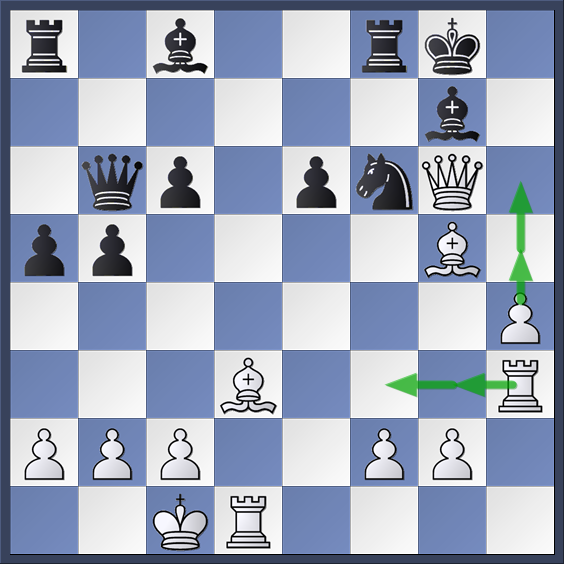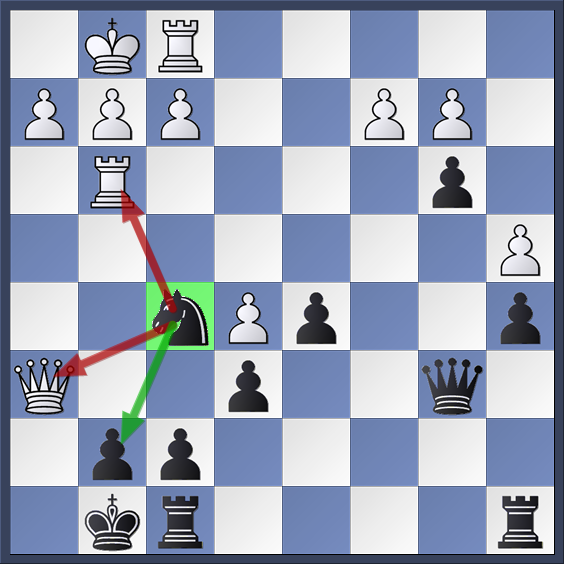My first game this season was played in my local club championship against Ian Mutton, an experienced and sharp player graded 144 ECF (1800 ELO). Based on the difference between our grades, I should score about 80% in our encounters - and I probably get around this in the friendly matches we play at the club. But we score very few draws which is the way of these 'skittles' games - both of us trying out some new ideas and him getting one over on me on occasion.
The difference here is that we were playing a 'serious' game which meant that I was determined to win without allowing Ian any winning chances - the pros call this "playing for two results" (ie a win or a draw). To this end, I decided to:
- Keep it simple
- Aim for imbalances (either in pawn structure, or in pieces eg Bishop for Knight)
I also told myself not to fear equality, on the basis that my opponent was more likely to make a mistake provided I don't try to force it.
White - Ian Mutton (144)
Black - Matt Fletcher (175)
7 October 2013
All moves in 80 minutes
1. e4 e6 2. d4 d5 3. Nd2 c5
So we have a French Defence, Tarrasch Variation. The most common fourth move here is exd4 but Ian's move is perfectly playable and often transposes.
I was happy to see this move which I thought was slightly inaccurate. Black's normal problem in the French is how to develop the c8 Bishop - but here White allows Black to swap it off painlessly. 5. exd5 or 5. Nxd4 are better alternatives.
5. ... Bd7 6. Bxd7+ Qxd7 7. Nxd4 Nc6 8. Nxc6 bxc6 9. 0-0
I was pleased with my position and thought Black was at least equal with chances to be better, particularly due to the asymmetric pawn structure and open b-file.
My one concern was that it wasn't absolutely clear to me where all my pieces belonged, and at this stage, I
thought for about 10 minutes to work out where my pieces ought to go. I
do this quite regularly in my games at about this point - not sure if it's a good or a bad habit.
I decided the best plan was to move the Bishop to d6. If 10. Qg4 (which is a thematic move in the French) I'd intended to play Kf8 (again a thematic move) to defend the g-pawn but White can just drop back to e2 and it seems like he'll have a small edge.
Instead we got:
9. ... Bd6 10. Qe2 Ne7 11. e5 Bc7 12. Nb3 Bb6 13. a4 a5 14. Be3 Qa7 15. Bxb6 Qxb6
All of this seems eminently sensible from both sides, and White looks at first glance to be doing fine.
But looking a little closer, Black already has an easier game - there are a number of moves I can play to improve my position (0-0, Rfb8, followed by slowly pushing forward with c5, c4, d4) where White has to be quite careful on the Queenside, has no open files for his Rooks and doesn't have any easy targets on the Kingside.
With no obvious plan, White starts to go wrong.
16. Rad1?! (16. Qd3 may be better, eg 16. ... 0-0 17. Nd4 with perhaps a slight edge to Black) 16... O-O 17.Rd3?
White puts his Rook on a square where it can be forked with a pawn on c4. So I can just make a threat by pushing forward with c5.
Do I need to worry about White playing his major pieces to the Kingside (Rh3, Qh5)? As a rule of thumb, it's very rare that two pieces will be able to checkmate against a defended King. If the Knight was on the Kingside (eg f4) it would be a different matter - there would be every chance of an attack with three pieces succeeding.
As it is, White gives it a go but there's nowhere near enough. And in the meantime he loses his Queenside.
17... c5 18. Rh3?
He had to try 18. Qe3 when I had intended 18. ... d4?! where White plays 19. Qe4 with a playable position. Instead 18... Rfb8! 19. Qxc5 Qxc5 20. Nxc5 Rxb2 giving the position below - Black is much better because White will lose at least one, and probably both, of c2 and a4.
18... c4 19. Qh5 h6
This simple pawn move shows White there will be no Kingside attack - he is simply lost. An amusing line here goes: 20. Rg3 where despite the apparent threats, Black can calmly play 20. ... cxb3 because 20. Qxh6? (threatening checkmate on g7) is met with the lovely 20 ... Nf5 which defends g7 and attacks everything else!
20. g4 cxb3 21. Rxb3 Qd4 22. Kh1 Qe4+ 23. f3 Qxc2 24. Rb7 Ng6 25. g5 Qe2 (25... Qg2+ followed by Nf4+ winning back the Queen is prettier but not as strong) 26. Rg1 Qxe5 27. f4 Nxf4 0-1
This was a pretty smooth win which is what I'd been hoping for. Ian missed his chance with 10 Qg4 and entered a position on move 15 that was close to equal, but easier for me to play due to the unbalanced pawn structure. In the absence of an obvious plan, White abandoned his Queenside for a Kingside attack - it's interesting (to me) to see how quickly his position went downhill after move 17.



























